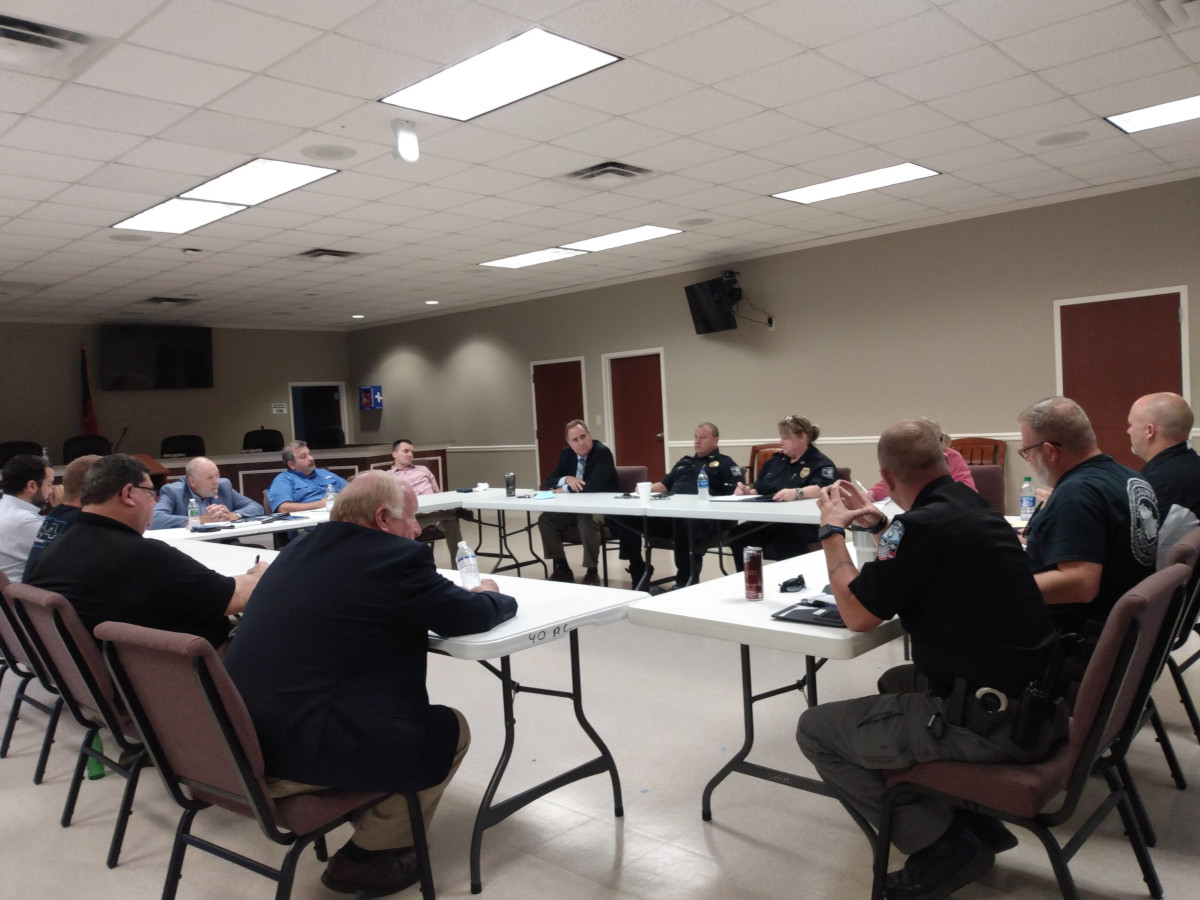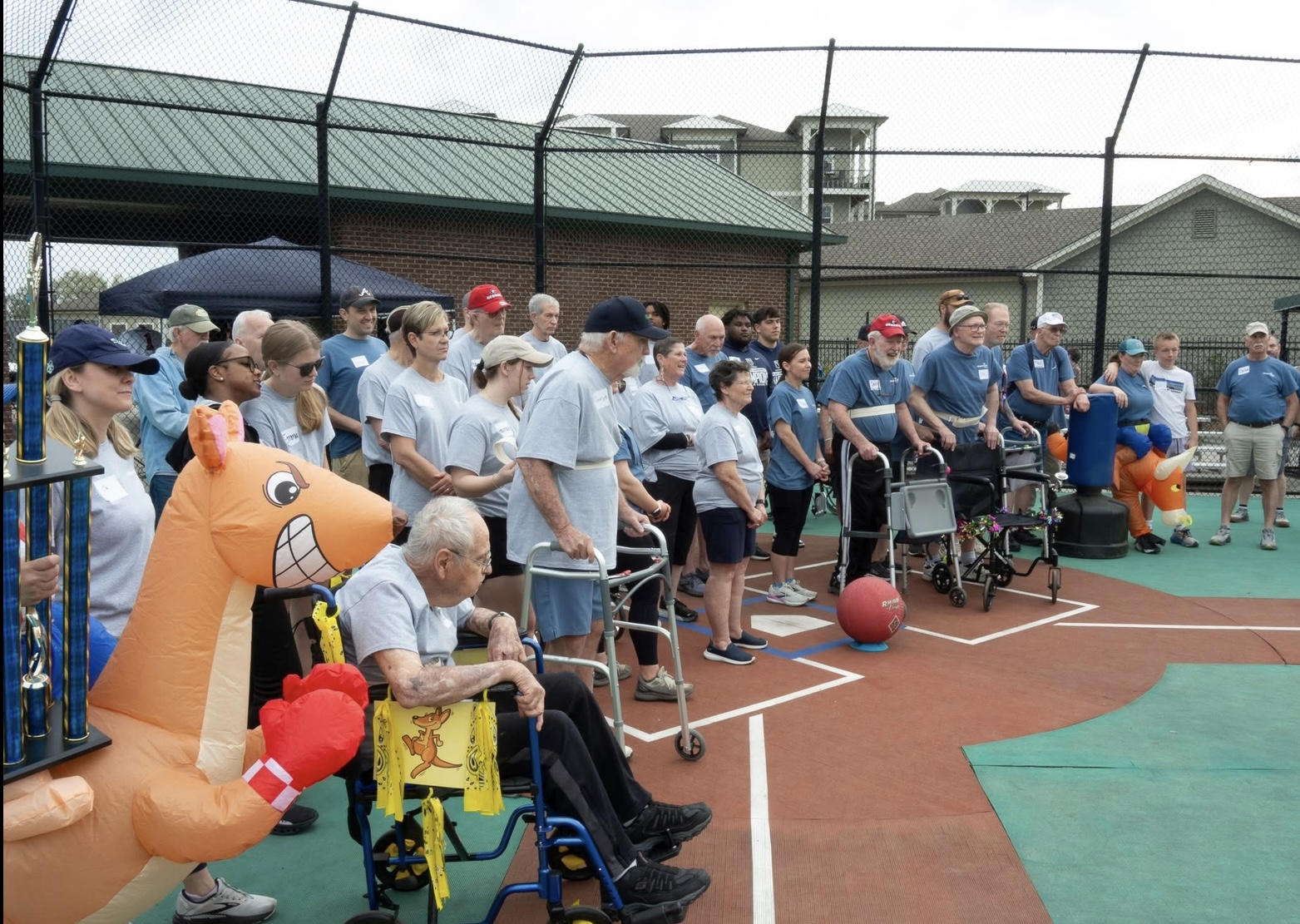Real need for tackling drugs in Polk County is money and manpower
County and city law enforcement officials gathered with local leadership again as a renewed effort to tackle the drug problem in Polk County continues as organizing efforts are underway for a first push toward eliminating the evils of the likes of meth and heroin out of the community.
However before any real progress can be made and arrests undertaken, the first and biggest problem that law enforcement leadership wants to deal with first is problems of having enough manpower to do more than just maintain their position.
Opening the second meeting of the Drug Suppression group made up of county and city law enforcement and attended by county commissioners Hal Floyd and Scotty Tillery, Mayor Sherman Ross, Cedartown City Commissioner Matt Foster, District Attorney Jack Browning, and city and county management, the group’s opening task was to determine what resources are available for law enforcement to utilize to tackle the problem.
The cupboard, per the chiefs, looks a bit threadbare in comparison to their needs to truly doing more than maintaining law enforcement’s current position in the community.
Local chiefs from across the county – city departments included – all reported numbers below what their staffing levels should be to maintain an enforcement level that hasn’t changed since the 1990s, but that going above and beyond will require additional assets to tackle the problem.
That means more spending on new hires to increase the level of law enforcement presence in the community.
However, it’s not just about hiring and putting more men and women in blue into police cars and sending them into the community to enforce the law. It is also about making a long-term investment in those people by providing them with resources and training to get the job done.
A commitment that Rockmart Police Chief Randy Turner said was important to make if the cities and county want to really delve deeper into the problem.
“Citywide, we have a lot of people that have been there for several years, and we’ve not had a lot of turnover,” he explained. “I’d say one of the things that we’ve had to improve upon was our training. If we could improve on that, we could make a difference. Our training budget is horrible, but what we need – you look at what a barber is required, heck, even to cut grass and simple things like that – and we only require 20 hours a year, that’s ridiculous.”
Rockmart Police Assistant Chief Jonathan Fuller – also the Drug Task Force commander – added his thoughts about training and said many times it is about simply covering the costs of gas and the employee’s time, and letting them go to a free seminar that can make a difference and expand one person’s abilities to do more within the department. He said that when he was promoted to his position out of the Drug Task Force, one thing the department did in Rockmart was “take a deep and thorough look at ourselves” to see what can be improved.
“We thought the first thing we would do is make ourselves better,” he said.
Fuller explained that through the course of talking to the District Attorney’s office on a regular basis, sitting down with officers and helping the improve their reporting, and giving them training opportunities that the heavy investment in the people makes a difference.
“We invested in the equipment we needed, we mentored where they needed or found someone to mentor them. If someone knows more than we do, we’d definitely hook them up with that resource,” he said. “We did a lot of liaison between Rockmart and other agencies. That was one thing – working together – that absolutely turned this thing around. (We also provided) Guidance, and most importantly we recognized them when they were doing a good job. Letting them know they were doing the best and letting them know they were exceeding our expectations.”
The results: building better cases to get results.
All of that in mind and more, the first item on the list that leadership has to tackle is where the money will come from to pay for increases in manpower and training opportunities.
Commissioner Scotty Tillery wants the county and cities to work together with the resources already at hand and see what can be done without having to increase the cost to taxpayers. How much the initial bill will be to begin tackling the problem was among the questions Tillery began with during the September 30 session.
“In terms of what things are going to cost, but we need to have a list of needs. We understand that things are going to cost more, but we don’t know what that is, and we don’t know where to look for it,” Tillery said.
Suppression is the real concern for Tillery, and what it really comes down to is having the officers to be able to handle that particular mission. If the goal is to ensure that drug dealers can’t do business because officers are actively watching their home, it takes those officers away from other police business happening around the clock. Chief Turner explained it best in replying about the want for suppression versus resources available.
“I get a call, and they say ‘hey go check out this house over here.’ In theory, that sounds great. But I’ve got one guy that has been at Walmart for four hours, one that is working a wreck on 278, and one that has been working a DUI for the past three hours. That’s a whole shift,” Turner said of the time spent by his men in the field on any given day. His point being that sometimes, there just isn’t enough hours in a regular payday to tackle everything police have to face.
City Manager Edward Guzman made much the same point when addressing the problem of allowing officers to simply sit and watch a drug dealer’s location of choice for selling. Complaints come in all the time about speeding on College Street in Cedartown, Guzman explained. But allowing an officer to sit for eight hours a day with the manpower at hand isn’t feasible or safe for the community as a whole, though it would provide a positive benefit to those who live on College Street.
Available manpower can be shifted from shift to shift to accommodate increases in crime during certain times of the day, which police are already doing in some capacity or another.
Turner said Rockmart Police officers have already shifted their schedule to respond to the growing needs of greater enforcement during the night hours as the needs have grown, but it takes away from officers being able to work during the day despite the help provided by other agencies around the city limits.
The problem is much the same in the county. As a veteran of Polk County Police, Turner told leadership that it wouldn’t be safe leaving police officers alone in their vehicles.
“Right now, our staffing numbers haven’t changed in years. It is based on population and calls for service… What that gives you is enough to do the job right now. It doesn’t give you enough to be proactive. Responsive, reactive. If you only look at population and calls for service, you’re a reactive agency,” Turner said. “All you can do is react to call after call after call. But if you truly want to do it, the first thing you have to ask is how many extra can you use on a shift? I could use one extra on a shift and maybe one floating.”
He said to be a truly productive agency, Rockmart Police would need four more officers, one to add to each shift at a minimum. He explained when pressed that eight would be better – two more men per shift. Polk County Police would need 12, and more would be needed in Cedartown, Aragon, and even at the Polk County Sheriff’s Office for each agency to be more than just reactive to crime problems.
Drugs are just one portion of the overall problem too. The crime that comes with it – thefts, robberies, shoplifting, common drug possession by users, traffic and domestic charges as well – are reason enough to increase the spending on local law enforcement in the view of the leadership as crime numbers continue to grow.
The money problem remains the real issue at hand.
“If we had the money, could we fill the positions in the environment that we’re in because I hear that it will be difficult to do that,” Commissioner Hal Floyd asked.
The staffing problem isn’t just an issue of money, but also of getting candidates in who can both qualify for the job and who want to do it. Floyd asked about whether contract positions – officers already mandated at other agencies coming in to work extra hours for local agencies – but that isn’t really a possibility, since many surrounding departments have rules about officers taking outside employment and the work hours they are allowed to take on outside of their regular duties.
Some agencies can allow contract work, but policies between different agencies also run the risk of bringing in some enforcement actions – like car chases – that are allowed in one place, but not allowed here.
Even without additional officers available at hand now, Tillery said he isn’t necessarily seeking a full ramp-up of law enforcement to proactive levels, but to do something with those who are on the street currently. His goal remains the same as it was during their August session: take steps right now to tackle the drug problem by denying dealers the opportunity to sell with impunity. Identify clear targets and the worst offenders, and focus on how to stop their trade now.
“What we’re talking about, it’s not about arresting. Not all about locking them up, and loading up the District Attorney’s office. What I brought forward – what we brought forward – is suppression of just having a car parked with two officers in it and just sitting there,” Tillery said.
District Attorney Jack Browning also added that resources have to be expanded in his office as well before any additional caseload can be handled, and not just for more lawyers to represent the state. Those public defenders who take up a large majority of the caseload for defendants who face drug charges – especially just for possession – and other underlying crimes related to drugs are overburdened as well. The whole of the system needs additional funding for the drug problem to be tackled as a whole.
To that point, Commissioner Tillery is willing to put his money where the county’s mouth is – so long as the whole county board is together on the subject of funding, at least for law enforcement.
“Hal (Floyd) and I are both talking with other commissioners about seeing if the county can fund this for the first 12 months, to give the cities the opportunity to gradually work this into their budget,” Tillery said. “I think after the first couple of years it is going to get easier, and easier and easier. It is not all about locking them up. It’s not about loading up the District Attorney. It is not about loading up the jail. it is about getting them out of here. And you can’t tell me that you can’t do it with police presence.”
The problem can still be solved through simple measures, and a point that Browning also agreed upon: simply making drug dealers nervous about police presence in the community can make a difference immediately.
Tillery believes that simply keeping the dealers from plying their trade with law enforcement right out in front of their locations could immediately cut down on the trade, and based on his own research of the situation locally and around the country he thinks it might be a solution. He pointed toward a county in Alabama – he wasn’t specific about which one at the time of the meeting – that has been able to utilize a tactic like his idea for getting drug dealers out of their community.
“If you drive these neighborhoods like I do – and this goes for Cedartown and Rockmart too – if you go to a stop sign and see a young man with a phone in his hand, then you’re getting close. You go to the other end of that section, whether you go straight or turn right, you’re going to see at the end of the other section a boy on a bicycle with a phone in his hand. It doesn’t matter whether the phone is this way or another. Somewhere in the middle of that is a problem…” Tillery explained. “It has gotten so bad, we’ve got a Cadillac that comes to Polk County from Fulton and sells out of his Cadillac… It is so easy to sell dope here in Polk County. I don’t know how we got here, but we’ve got to take the convenience out of it. The only way we’re going to do it is for each of us to come together and figure it out.”
The agencies and local leadership agreed by meeting’s end to begin planning of how best to target the worst offenders in the county who ply the drugs causing the biggest problem – heroin, opiates, methamphetamine – right now, and as developments occur look at expanding the potential reach of suppression efforts as more resources become available.
What next steps being taken forward, for now, are in the hands of law enforcement who will keep some of their work confidential for the time being to avoid any strategy used by the criminal element against police in their efforts to reduce drug trafficking locally.
Floyd called upon the group to meet again in late October to sit down and look at what has been accomplished so far as the September 30 session wrapped up.





















Leave a Reply